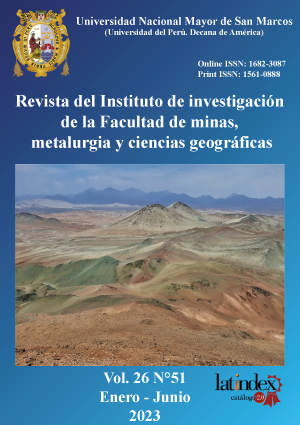Adsorption capacity of agroindustrial waste to remove contaminants from wastewater
DOI:
https://doi.org/10.15381/iigeo.v26i51.25258Keywords:
agroindustrial residues, unmodified biosorbent, premodified biosorbent, chemically modified biosorbent, physically modified biosorbent, heavy metals, adsorptionAbstract
Agroindustrial residues are among the lowest cost biomass inputs, these are currently the most applied for the elimination of pollutants in wastewater. This article makes a compilation of the latest experimental findings presented with different organic materials. In this study, the adsorbents were classified based on their preparation technique as: unmodified biosorbent, premodified biosorbent, chemically modified biosorbent, and physically modified biosorbent. It was observed that orange peel, coconut, rice and chestnut are the species with the best results in the adsorption studies. The contaminants adsorbed by these carbons have been more on metals and dyes. Said review showed the good adsorption capacities of the carbons obtained through agro-industrial residues for the adsorption of heavy metals, dyes, pesticides and other contaminants. It was also observed that agro-industrial residues have a high potential for reuse, which underlines their usefulness for industrial application.
Downloads
Published
Issue
Section
License
Copyright (c) 2023 Cesar Augusto Paccha Rufasto, Pablo Roberto Paccha Huamani

This work is licensed under a Creative Commons Attribution 4.0 International License.
AUTHORS RETAIN THEIR RIGHTS:
a. Authors retain their trade mark rights and patent, and also on any process or procedure described in the article.
b. Authors retain their right to share, copy, distribute, perform and publicly communicate their article (eg, to place their article in an institutional repository or publish it in a book), with an acknowledgment of its initial publication in the Rev. Inst. investig. Fac. minas metal cienc. geogr.
c. Authors retain theirs right to make a subsequent publication of their work, to use the article or any part thereof (eg a compilation of his papers, lecture notes, thesis, or a book), always indicating the source of publication (the originator of the work, journal, volume, number and date).






